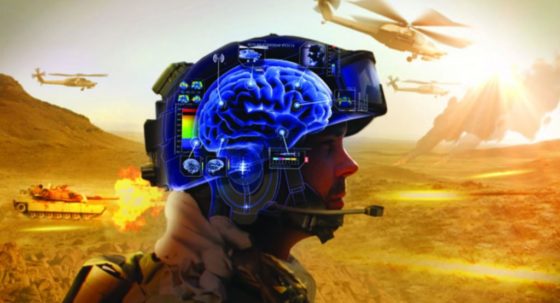
Breaking News
 Is Yen Carry Trade's unwind about to trigger a repo market meltdown? Let's dive into the mec
Is Yen Carry Trade's unwind about to trigger a repo market meltdown? Let's dive into the mec
 Chairman Rand Paul Releases New Report Revealing Hundreds of Billions...
Chairman Rand Paul Releases New Report Revealing Hundreds of Billions...
 Get Schiffty Music Video | Rick and Morty | Adult Swim
Get Schiffty Music Video | Rick and Morty | Adult Swim
Top Tech News
 This tiny dev board is packed with features for ambitious makers
This tiny dev board is packed with features for ambitious makers
 Scientists Discover Gel to Regrow Tooth Enamel
Scientists Discover Gel to Regrow Tooth Enamel
 Vitamin C and Dandelion Root Killing Cancer Cells -- as Former CDC Director Calls for COVID-19...
Vitamin C and Dandelion Root Killing Cancer Cells -- as Former CDC Director Calls for COVID-19...
 Galactic Brain: US firm plans space-based data centers, power grid to challenge China
Galactic Brain: US firm plans space-based data centers, power grid to challenge China
 A microbial cleanup for glyphosate just earned a patent. Here's why that matters
A microbial cleanup for glyphosate just earned a patent. Here's why that matters
 Japan Breaks Internet Speed Record with 5 Million Times Faster Data Transfer
Japan Breaks Internet Speed Record with 5 Million Times Faster Data Transfer
 Advanced Propulsion Resources Part 1 of 2
Advanced Propulsion Resources Part 1 of 2
 PulsarFusion a forward-thinking UK aerospace company, is pushing the boundaries of space travel...
PulsarFusion a forward-thinking UK aerospace company, is pushing the boundaries of space travel...
 Dinky little laser box throws big-screen entertainment from inches away
Dinky little laser box throws big-screen entertainment from inches away
 'World's first' sodium-ion flashlight shines bright even at -40 ºF
'World's first' sodium-ion flashlight shines bright even at -40 ºF
The Pentagon is building technology that would allow troops to control machines with their minds

The Defense Advanced Research Projects Agency, also known as DARPA, says the technology, known as Next-Generation Non-Surgical Neurotechnology, or N3, will allow troops to connect to special military control systems using just their brainwaves. The technology will allow for humans to not only control military machines with their minds, but also the inverse – military machines would be able to transmit information to users' brains as well.
The goal is to combine "the speed and processing power of computers with humans' ability to adapt to complex situations," according to DARPA. It will allow people to "control, feel and interact with a remote machine as though it were a part of their own body."
"From the first time a human carved a rock into a blade or formed a spear, humans have been creating tools to help them interact with the world around them," says Al Emondi, the program manager at DARPA's Biological Technologies Office.
"The tools we use have grown more sophisticated over time … but these still require some form of physical control interface – touch, motion or voice. What neural interfaces promise is a richer, more powerful and more natural experience in which our brains effectively become the tool."
Mark of the beast: melding humans with machines
DARPA claims that the technology is completely innocent, as similar iterations of it for disabled veterans are already in use. "Revolutionizing Prosthetics," as it's called, is a program by DARPA that implants electrodes into disabled veterans' brains, allowing them to control prosthetic limbs simply by thinking about it.
But isn't that always how egregious new forms of transhumanism typically start? Positive anecdotes about how invasive technologies are "helping people" almost always functions as the gateway to more government control over humans – in this case, military servicemen who are being told that implantable technologies stand to benefit humanity.
DARPA's rhetoric would have us all believe that combining man with machine is somehow beneficial and even "natural," even though its true implications are more "mark of the beast" than they are revolutionary breakthrough.



